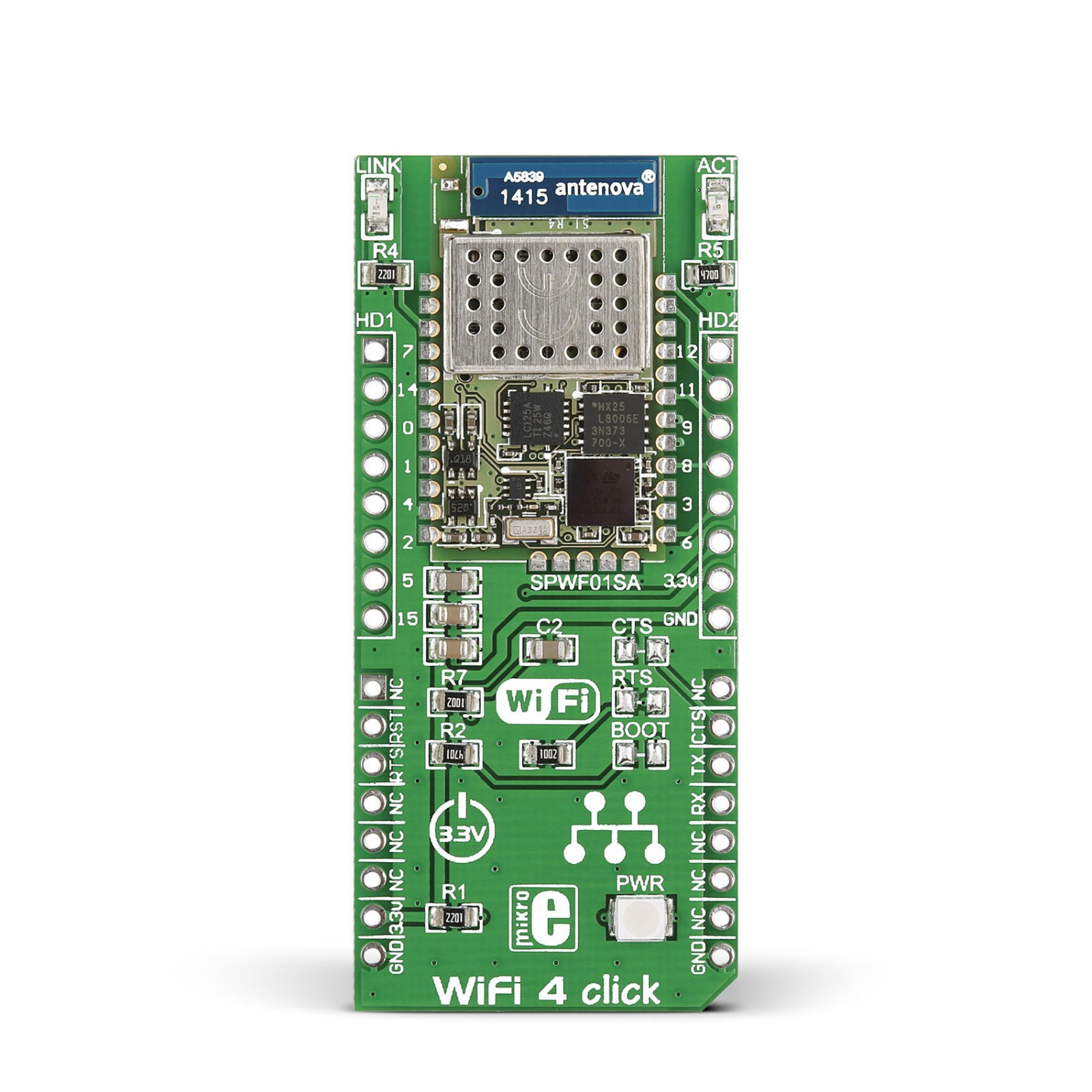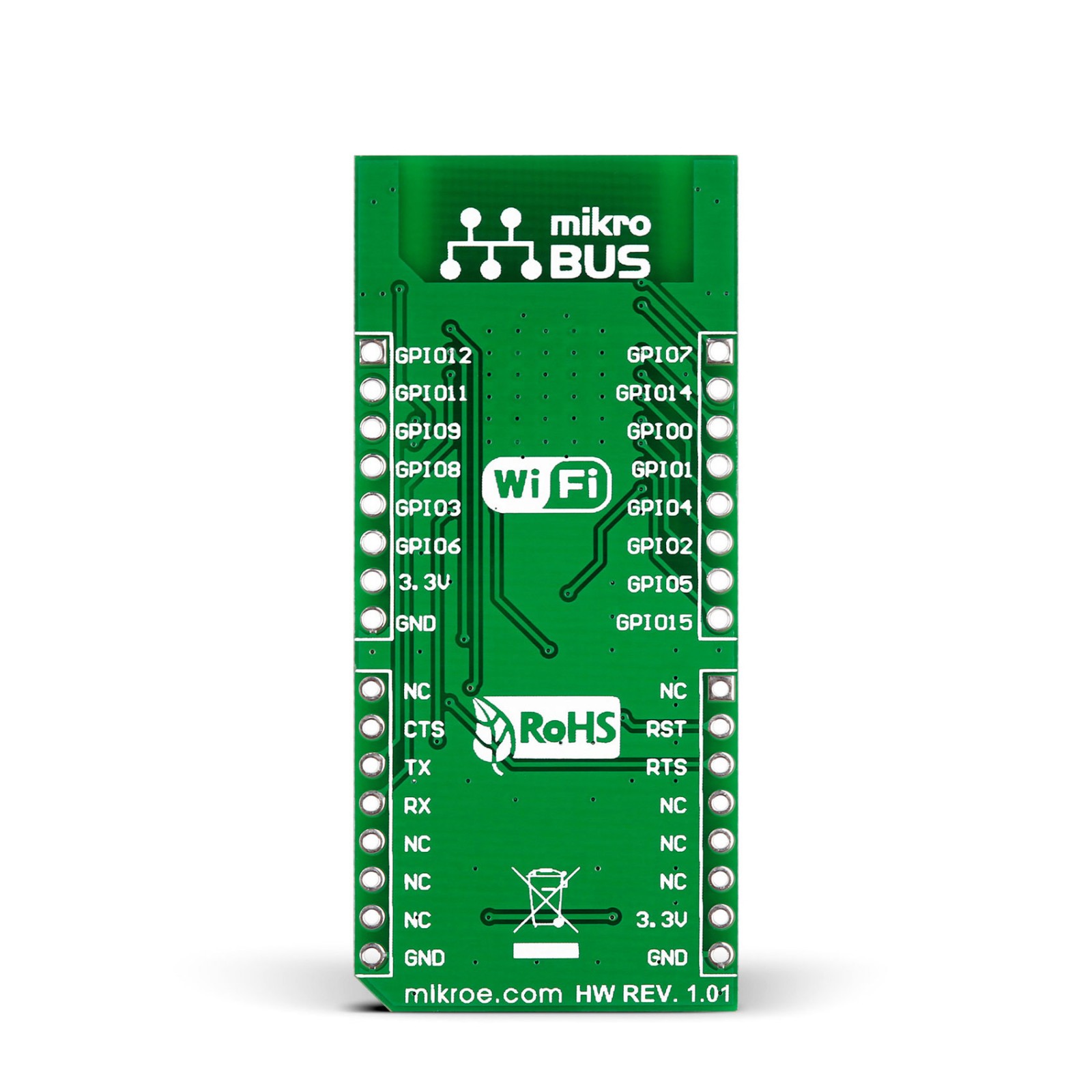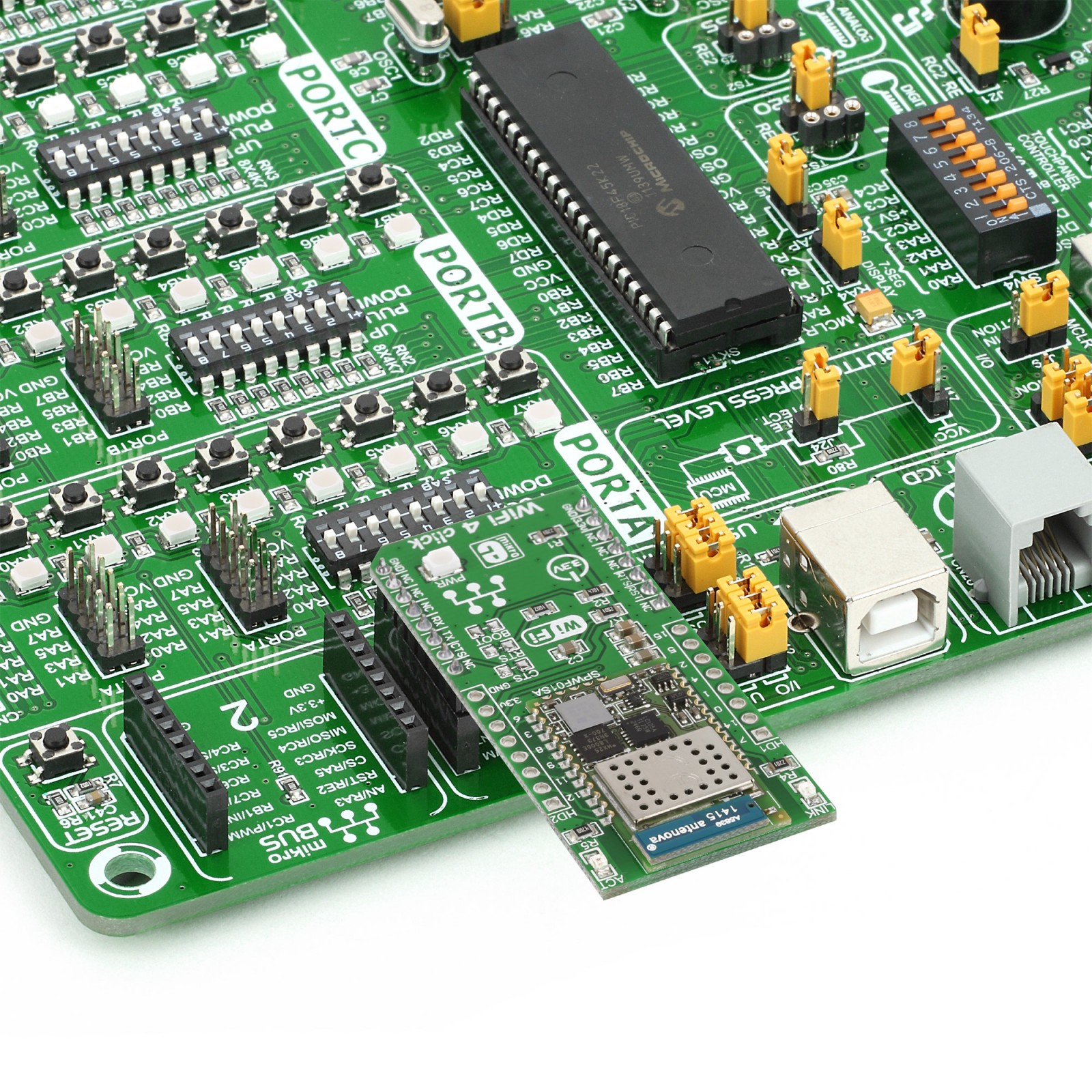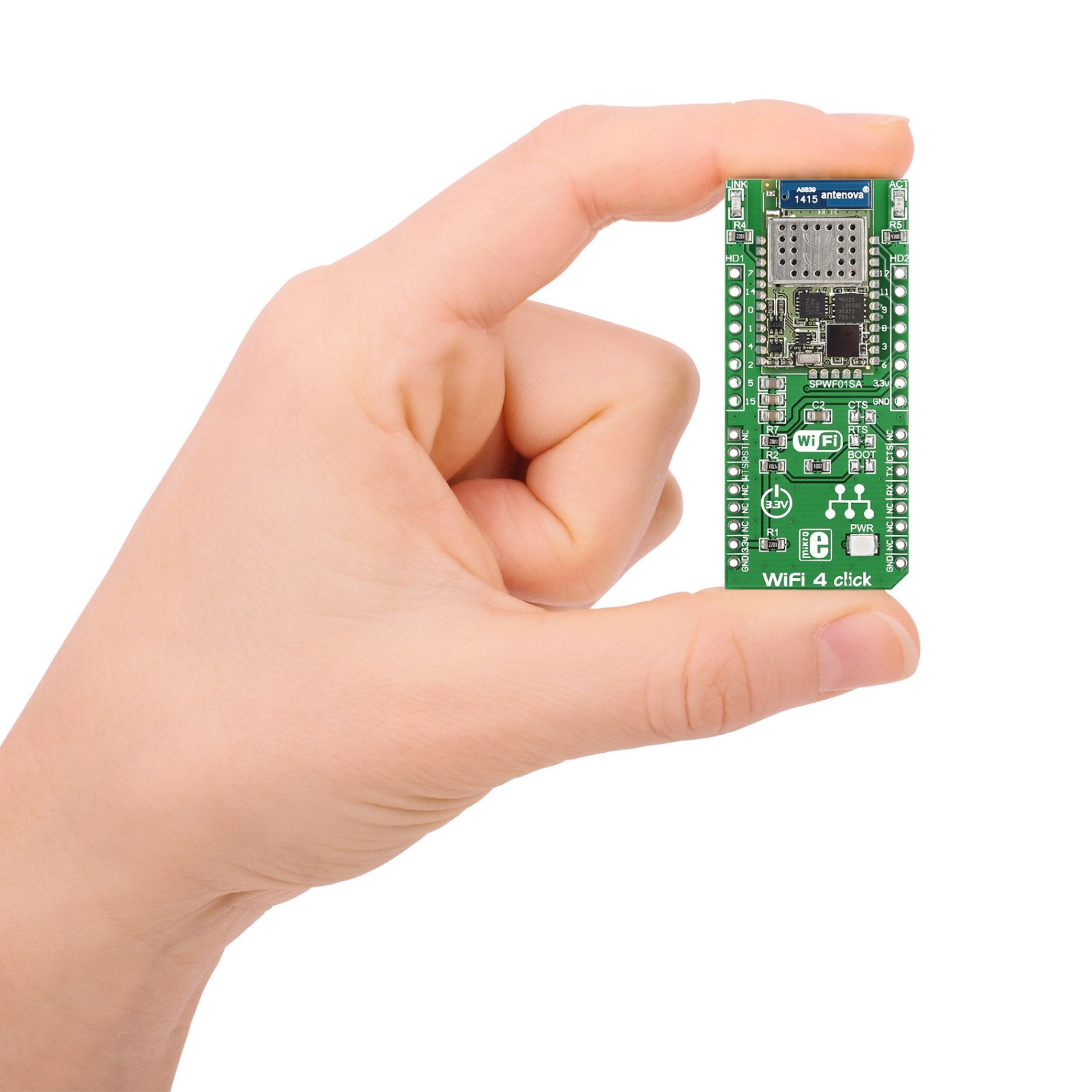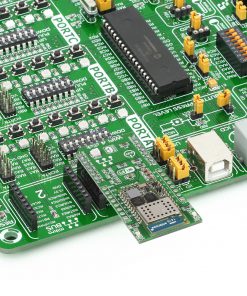Subtotal: R1,300.00
WiFi 4 Click
R1,050.00 ex. VAT
WiFi 4 Click is a compact add-on board that provides a low-power WiFi solution. This board features SPWF01SA, a serial-to-WiFi b/g/n intelligent module from STMicroelectronics. This fully integrated module uses the IEEE802.11b/g/n standard in the 2.4GHz ISM frequency band that can work in Station, IBSS, and miniAP (up to 5 stations) modes. In addition, the SPWF01SA supports standard security authentication systems (WEP/WPA/WPA2), up to eight simultaneous TCP or UDP clients, and one socket server. This Click board™ makes the perfect solution for highly integrated and cost-effective applications, industrial wireless control, smart home applications, utility and smart energy, remote device management, and more.
WiFi 4 Click is supported by a mikroSDK compliant library, which includes functions that simplify software development. This Click board™ comes as a fully tested product, ready to be used on a system equipped with the mikroBUS™ socket.
Stock: Lead-time applicable.
| 5+ | R997.50 |
| 10+ | R945.00 |
| 15+ | R892.50 |
| 20+ | R858.90 |

 GSM-GPS Click
GSM-GPS Click 